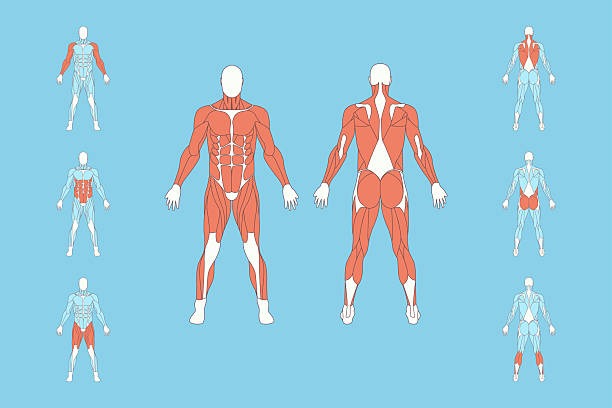Muscle growth isn’t magic. It’s a clear process of adaptation. Each workout gives the body a signal. This signal tells muscles to get stronger. Over time, small changes add up. But science explains exactly how it works. Knowing these steps helps make training more effective. It also helps avoid wasted effort. With a bit of clarity, building muscle feels less random. It becomes a guided path. Understanding the “why” behind each lift makes every rep count.
How Muscles Respond to Stress
When a muscle works hard, tiny damage occurs to its fibers. These micro-tears aren’t a bad thing. They tell the body to repair and reinforce the muscles. This process triggers growth. Repairing the fibers makes them thicker and stronger. It takes time and resources from the body. Protein, rest, and good nutrition all support this repair. Without any of these, the muscles can’t grow properly. Stress, then repair, is the fundamental cycle of muscle adaptation.
The Role of Protein and Amino Acids
Protein is the building block for muscle repair. After training, muscle fibers crave amino acids. These small compounds help rebuild the fibers. Eating enough quality protein ensures a steady supply. Sources like lean meat, dairy, and beans all help. Spreading protein intake across meals feeds muscles throughout the day. Muscle protein synthesis peaks after a workout. A balanced meal or shake soon after exercise maximizes repair. Over time, consistent protein intake supports ongoing growth.
Importance of Progressive Overload
Muscles need new challenges to keep adapting. Lifting the same weight for months leads to a plateau. Progressive overload means slowly increasing demand. It can be done by adding weight, reps, or sets. It can also mean reducing rest times or changing angles. Each tweak forces the muscles to work harder than before. Harder work sparks new growth. Tracking these small increases keeps progress steady. Without this, muscles settle into their comfort zone and stop growing.
Finding Your Ideal Hypertrophy Rep Range
Muscle growth often thrives in a specific tension window. Research points to an optimal range—commonly called the hypertrophy rep range. This typically falls between eight to twelve reps per set. Working in this range creates enough tension and metabolic stress to spark growth. Going much higher or lower still builds strength or endurance but may not maximize size gains. Mixing heavier sets and lighter sets can cover all bases. But the core of a muscle-building plan often centers on this sweet spot of reps.
Rest and Recovery in Muscle Adaptation
Growth happens outside the gym. When workouts end, the repair process begins. Sleep is a key part of this phase. Deep sleep boosts hormone release that supports muscle repair. Active rest days—like gentle yoga or walking—improve circulation without extra stress. Overtraining can delay or reverse progress. Soreness is normal, but persistent fatigue often signals a need for rest. Balancing work and recovery ensures muscles have time to rebuild. Consistency depends on respecting the body’s need to heal.
Nutrition Beyond Protein
While protein is vital, other nutrients play supporting roles. Carbohydrates refill muscle energy stores. They fuel the next workout and protect muscle from using itself as energy. Healthy fats support hormone production, including those that aid in growth. Vitamins and minerals—like vitamin D, magnesium, and zinc—contribute to performance and recovery. A varied diet of whole foods covers these bases. Hydration also affects muscle function and repair. Missing any of these pieces can slow progress. A well-rounded nutrition plan surrounds training with the right tools.
Tracking Progress and Adjusting Strategy
Regular check-ins guide long-term gains. Measuring strength, size, or body composition offers real feedback. When growth slows, strategies may need tweaks. That might mean changing exercises, adjusting nutrition, or reworking rest days. Short-term plateaus are normal. They’re signals, not failures. Tracking keeps motivation strong by showing small wins over time. It also helps avoid chasing trends that don’t work for the individual. A personalized plan that adapts to progress ensures steady advancement.
Conclusion
Muscle growth follows clear scientific steps: stress, nutrition, and recovery. Each workout signals the need for repair. Proper protein, progressive overload, and balanced nutrition provide the tools. Rest solidifies gains. Tracking progress guides ongoing improvements. Understanding this science turns random workouts into a purposeful plan. With these insights, building muscle becomes a reliable journey. Every lift, meal, and rest day serves a clear purpose. And with patience, consistent effort leads to real, lasting strength.


